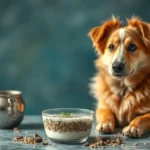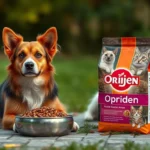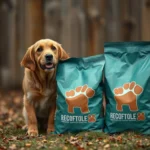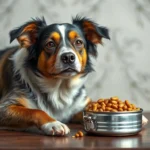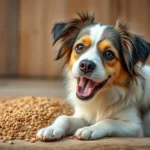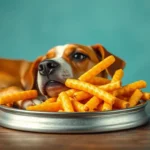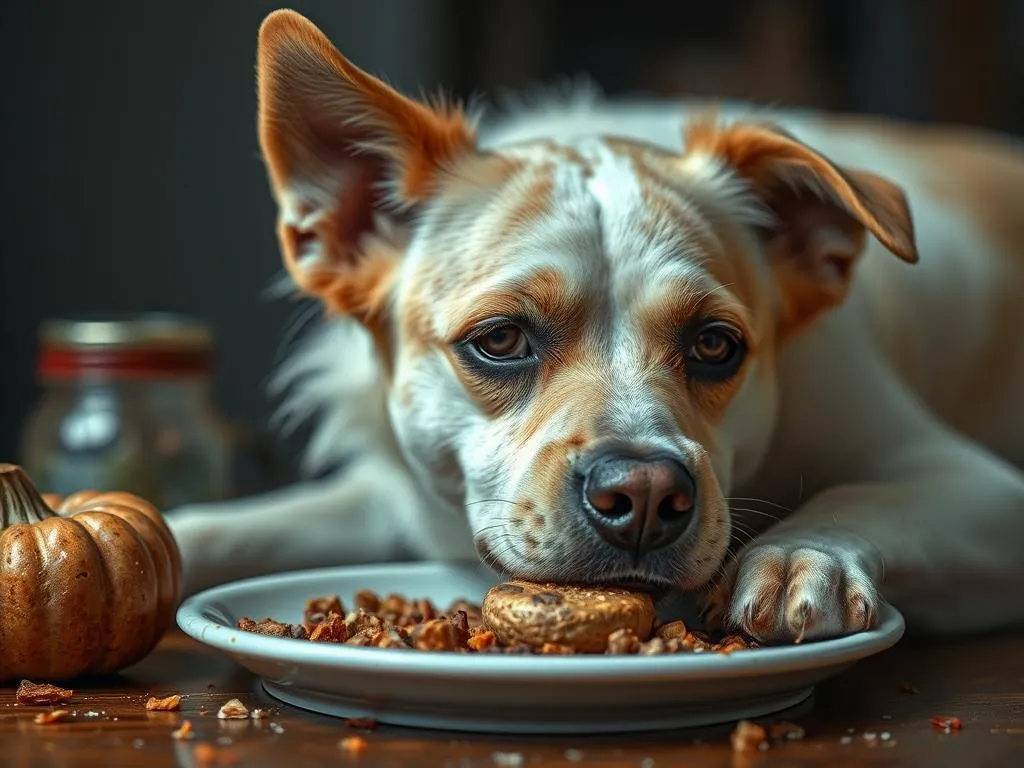
Introduction
Understanding dog nutrition is crucial for every pet owner. A balanced diet not only supports a dog’s growth and energy levels but also plays a vital role in their overall health. However, it’s equally important to understand what dogs can and cannot eat. One common issue that many pet owners face is the consumption of moldy food, which can have serious implications for their dog’s health.
When dogs consume moldy food, they may be at risk for various health issues, including poisoning from toxic molds. This article will explore the risks associated with moldy food, what to do if your dog ate moldy food, and how to prevent such situations in the future.
Understanding Dog Nutrition
Basics of Dog Nutrition
A dog’s nutritional needs are different from those of humans. Essential nutrients include:
- Proteins: Vital for growth, tissue repair, and immune function.
- Fats: Provide energy and support cell structure.
- Carbohydrates: Serve as an energy source and support digestive health.
- Vitamins and Minerals: Essential for various bodily functions, including bone health, vision, and immune response.
A balanced diet incorporating these nutrients is critical for a dog’s well-being. Lack of proper nutrition can lead to health problems, including obesity, diabetes, and heart disease.
Common Dog Food Types
When it comes to dog food, owners have several options to choose from:
- Kibble: Dry dog food that is convenient and shelf-stable.
- Wet Food: Canned food that can enhance hydration and palatability.
- Raw Diets: Uncooked meat and vegetables that some owners prefer for their nutritional value.
When selecting a dog food brand, it’s advisable to look for high-quality ingredients without fillers. Brands like Blue Buffalo, Wellness, and Hill’s Science Diet offer excellent options.
Foods to Avoid
Certain human foods can be toxic to dogs. These include:
- Chocolate: Contains theobromine, which is harmful to dogs.
- Grapes and Raisins: Can lead to kidney failure.
- Onions and Garlic: Can damage red blood cells and cause anemia.
Additionally, be aware of potential allergens contained in dog food, such as corn, soy, and wheat. Always check ingredient labels to ensure a safe diet for your furry friend.
The Risks of Moldy Food
What is Mold?
Mold is a type of fungus that grows in the presence of moisture and organic material. Common types of mold found in food include:
- Aspergillus
- Penicillium
- Cladosporium
Mold can thrive in warm, damp environments and can quickly spread on food, making it important to be vigilant about food storage and freshness.
Dangers of Moldy Food for Dogs
When dogs consume moldy food, they may be exposed to harmful toxins known as mycotoxins. These substances can lead to a variety of health issues, including:
- Vomiting
- Diarrhea
- Lethargy
- Loss of appetite
Symptoms can vary depending on the type of mold and the amount consumed. If your dog exhibits any of these symptoms after eating moldy food, prompt attention may be necessary.
Specific Risks Based on Food Type
The risks associated with moldy food can differ based on the type of food:
- Moldy Dry Food: Generally lower moisture content, but can still harbor toxins.
- Moldy Wet Food: Higher moisture can lead to faster mold growth, posing a greater risk.
Certain items are more prone to mold, such as:
- Bread: Often contains preservatives that can interact with mold.
- Fruits: High moisture content makes them susceptible to mold growth.
What to Do If Your Dog Ate Moldy Food
Immediate Steps to Take
If you discover that your dog has eaten moldy food, the first step is to assess the situation:
- Amount Consumed: Estimate how much moldy food your dog ate.
- Monitor Symptoms: Keep an eye on your dog for any signs of illness over the next few hours.
When to Contact a Veterinarian
If your dog shows any of the following signs after eating moldy food, it’s crucial to seek veterinary care immediately:
- Persistent vomiting
- Severe diarrhea
- Signs of dehydration (e.g., dry gums, excessive thirst)
- Lethargy or weakness
When contacting your vet, provide them with the following information:
- Type of food consumed
- Amount eaten
- Time of ingestion
This information will help the veterinarian assess the situation more effectively.
Home Remedies and Treatments
For mild cases where your dog is not exhibiting severe symptoms, you can take some home remedies:
- Hydration: Ensure your dog has access to plenty of fresh water.
- Rest: Allow your dog to rest and recover without stress or activity.
However, avoid giving your dog any over-the-counter medications without consulting your veterinarian first.
Preventing Moldy Food Consumption
Proper Food Storage
Preventing mold growth starts with proper storage practices:
- Store Food in a Cool, Dry Place: Keep dog food in a sealed container to minimize exposure to moisture.
- Check Expiration Dates: Always use dog food within its expiration date to ensure freshness.
Regular Inspection of Dog Food
Routine checks are essential to ensure your dog’s food remains safe to eat:
- Visual Inspection: Look for any signs of mold or unusual odors before feeding your dog.
- Texture Check: If the food feels damp or has changed in texture, discard it.
Educating Yourself and Family Members
It’s vital to educate everyone in your household about the dangers of feeding moldy food to pets. Creating a pet-friendly kitchen environment can help prevent accidental consumption:
- Teach Children: Explain why they shouldn’t feed pets leftovers or food that looks bad.
- Set Up a Safe Space: Keep dog food in a designated area away from human food.
Alternative Nutrition Solutions
Safe Foods for Dogs
If you’re looking for healthy, non-toxic foods to share with your dog, consider:
- Carrots: Great for dental health and low in calories.
- Peanut Butter: A favorite treat, but ensure it’s xylitol-free.
- Pumpkin: Good for digestion and can be served cooked or canned.
Homemade Dog Food Recipes
Creating homemade dog food can be a nutritious alternative. Here are a couple of simple recipes:
Chicken and Rice Recipe:
– 1 cup cooked chicken (diced)
– 1 cup brown rice (cooked)
– 1/2 cup peas and carrots (cooked)
Beef and Vegetable Stew:
– 1 pound ground beef (cooked)
– 1 cup sweet potatoes (diced and cooked)
– 1 cup green beans (cooked)
– 1 cup water or low-sodium broth
Before changing your dog’s diet, consult with a veterinarian to ensure it meets all their nutritional needs.
Supplements for Dog Health
Supplements can be beneficial to enhance a dog’s diet, especially for specific health concerns:
- Omega-3 Fatty Acids: Good for skin, coat, and joint health.
- Probiotics: Support digestive health and immune function.
- Multivitamins: Fill in nutritional gaps in your dog’s diet.
Choose supplements carefully and consult your veterinarian to find the right ones for your dog’s unique health needs.
Conclusion
In summary, dog nutrition is a vital aspect of pet ownership, and understanding the dangers of moldy food is essential for maintaining your dog’s health. If your dog ate moldy food, be vigilant about monitoring their symptoms and seeking veterinary care when necessary. By implementing proper storage practices, regularly inspecting dog food, and educating your family, you can prevent moldy food consumption in the future. Always consult with your veterinarian for personalized dietary advice, ensuring your furry friend leads a happy, healthy life.


